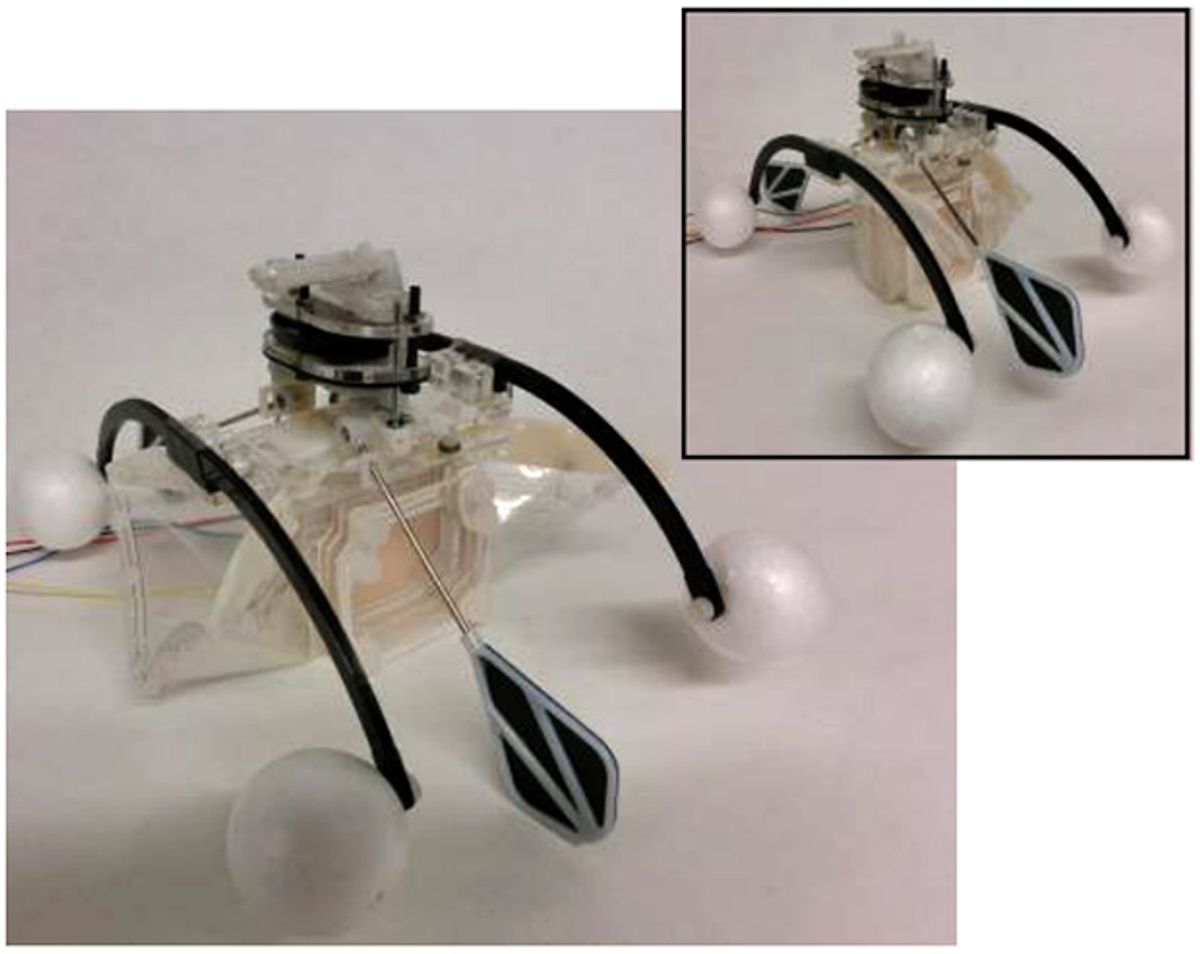Robots are better than animals in almost every way. Well, they’re better in some ways, I guess. I mean, robots are occasionally okay at some things. A few things. None of those things are energetic autonomy: the ability to operate continuously and indefinitely without dependence on humans for refueling. There certainly are robots that operate autonomously for long durations, and they’re either feeding off of radioactivity, or they’re relying on solar panels that don’t work half the time. A better option (at least in some situations) might be robots that forage for food like animals do, taking care of their own energy needs all by themselves.
This is only a slightly crazy idea (although at one point it was briefly the craziest idea ever), and fuel cells that are full of living microbes are a real thing. At the Bristol Robotics Laboratory, in the United Kingdom, they’ve been developing a robot called Row-bot that can swim around, harvesting energy directly from the water using a microbial fuel cell as an artificial stomach.
According to the researchers, Microbial Fuel Cells (MFCs) generate electricity by “electrons mobilised by the redox reaction that takes place in electrogenic bacterial anabolism.” More specifically, in the case of their device, they explain that “raw organic biomass is used as both an inoculant for the bacterial culture and the anolyte that fuels the reaction resulting in an environmentally biocompatible means of electricity generation.” In other words (simpler ones), microbes eat stuff in the water and poop out electrons, and as long as you’ve got enough water with stuff in it to keep the microbes fat and happy, they’ll keep giving you electrons that you can use to make your robot do things. MFCs work in all kinds of water, including fresh water in rivers and lakes, seawater, and even waste water, and they actually clean the water as they go, which is nice.
Microbes are kind of tiny, and each one doesn’t produce a lot of energy, so to do anything useful, you either need a whole bunch of them (multiple fuel cells) or a very efficient robot. Row-bot is very efficient, modeled on a water beetle. It has two side paddles to move, little floaty feeties to keep it from drowning, and a microbial fuel cell in its tummy:
It has a mouth, too, that it can open to ingest water for the fuel cell, and also a fuel outflow port on its posterior end that we’d call its butt if we were immature, which we’re not. Each time the robot opens its mouth, it swims forward, ingests fresh water into its MFC tummy, digests for 3 minutes, and then expels the water out the back as it swims forward again, making room for a fresh gulp. Row-bot stores the energy generated by the MFC in a capacitor, and over one cycle (opening its mouth, swimming 10 strokes forward at just under 1 stroke per second and then closing its mouth), it only uses 1.8 joules. That’s 20 centimeters of motion with about 1 joule of energy leftover that could potentially be used to power sensors or laser turrets or something.
As long as Row-bot has water to swim through, the MFC makes it more or less energetically autonomous, although the current design is mostly a testbed for integration of the MFC with actuators to see how well it works. There’s a lot more optimization that needs to happen, like reducing body drag and finding the most efficient combination of materials to use for the paddles, as well as altering the “stride” of the robot to better mimic actual water beetles. Also, multiple MFCs could be configured in series if you need more power for those aforementioned laser turrets.
Eventually, the researchers suggest that Row-bot could be developed for applications such as remote sensing and environmental monitoring and clean-up, although space exploration isn’t out of the question either.
Also, it’s called “Row-bot.” Get it? Row-bot the robot. Heh.
“Row-bot: An Energetically Autonomous Artificial Water Boatman,” by Hemma Philamore, Jonathan Rossiter, Andrew Stinchcombe, and Ioannis Ieropoulos from the University of Bristol and University of the West of England, was presented at IROS 2015 in Hamburg, Germany.
Evan Ackerman is a senior editor at IEEE Spectrum. Since 2007, he has written over 6,000 articles on robotics and technology. He has a degree in Martian geology and is excellent at playing bagpipes.




